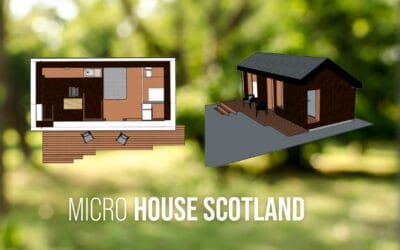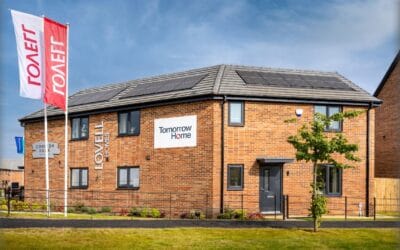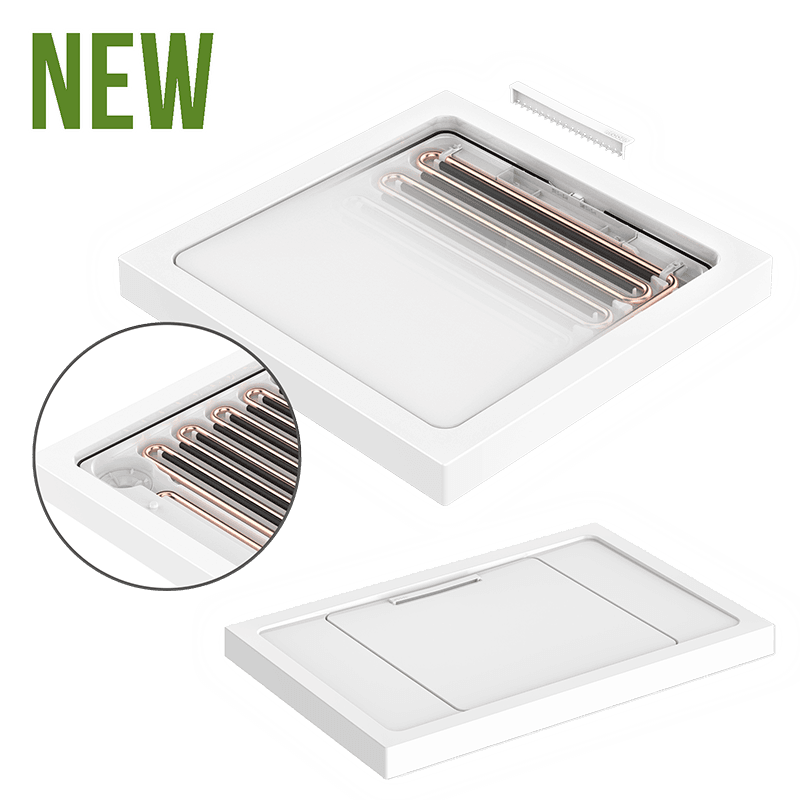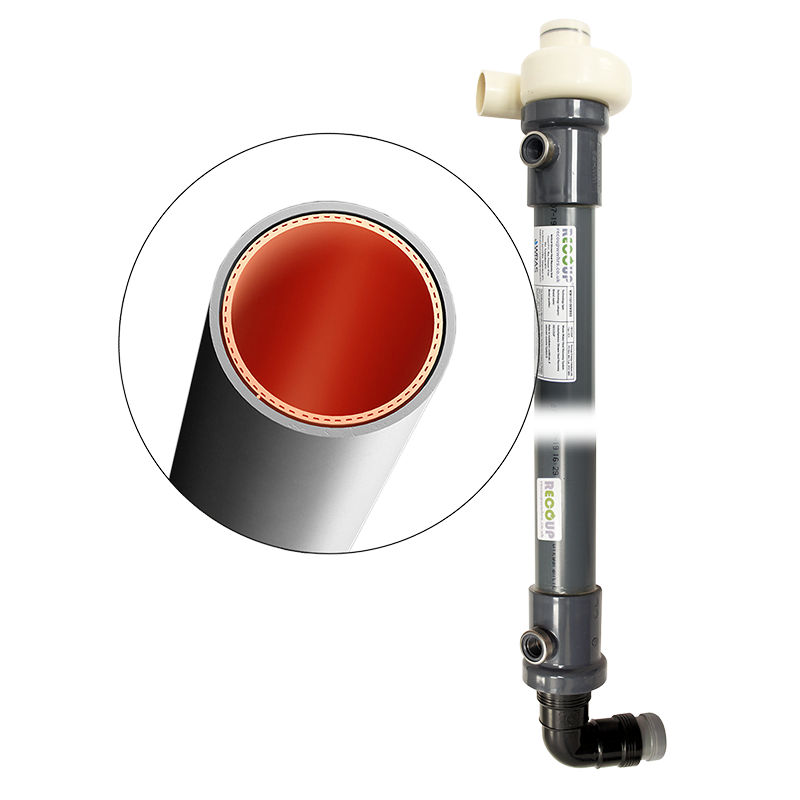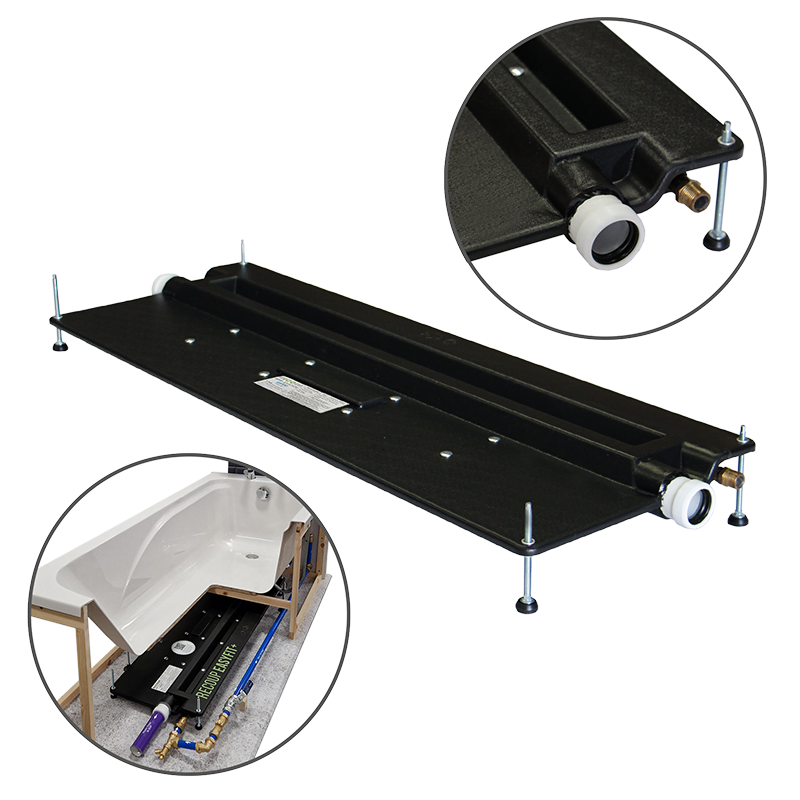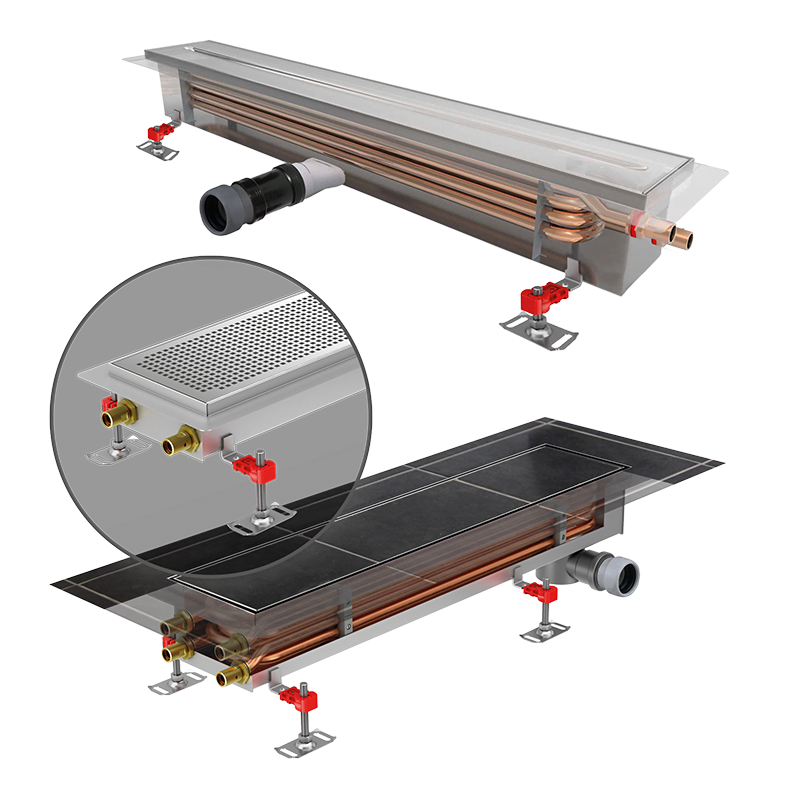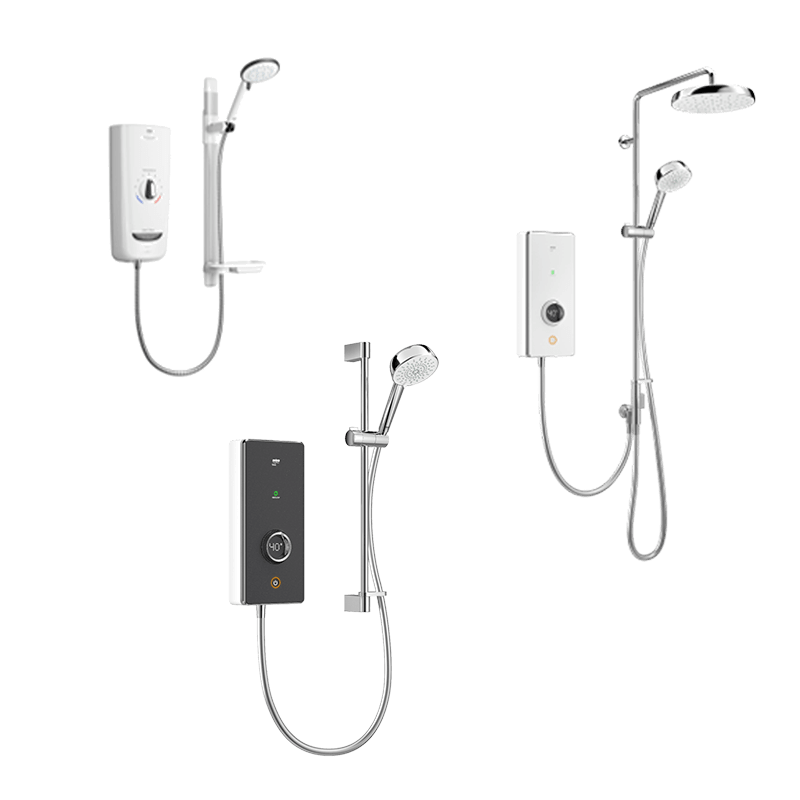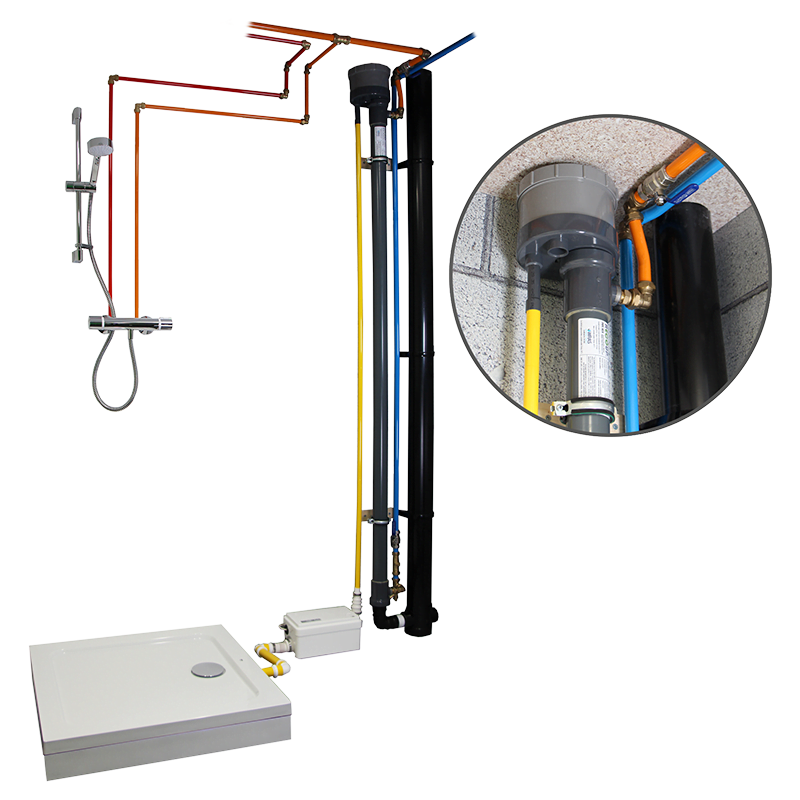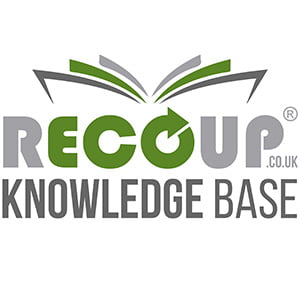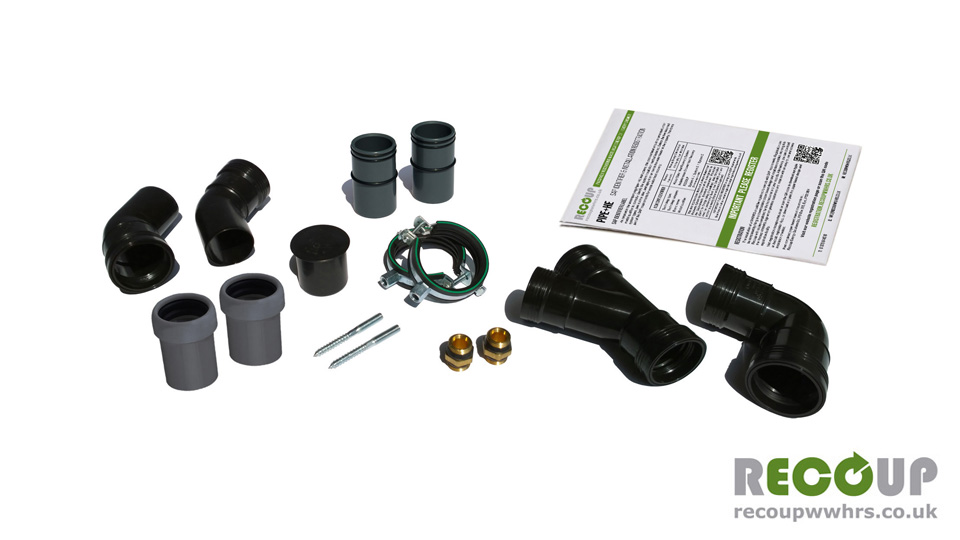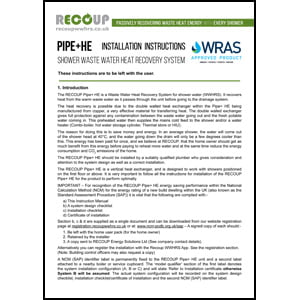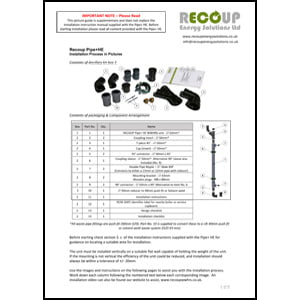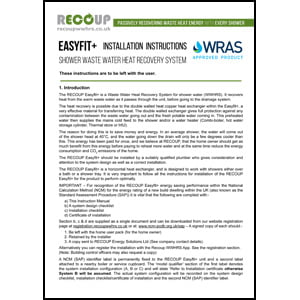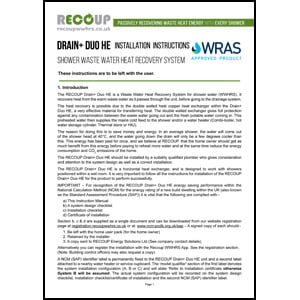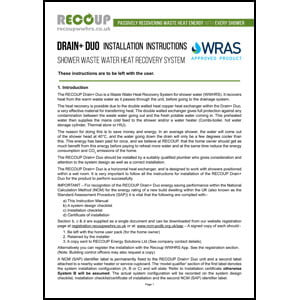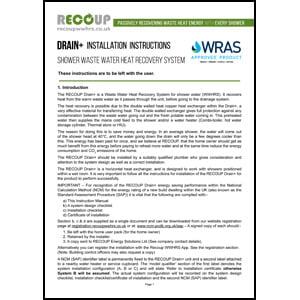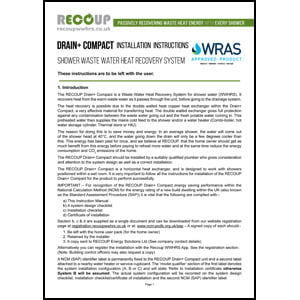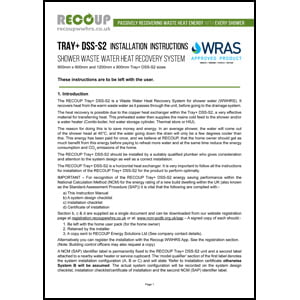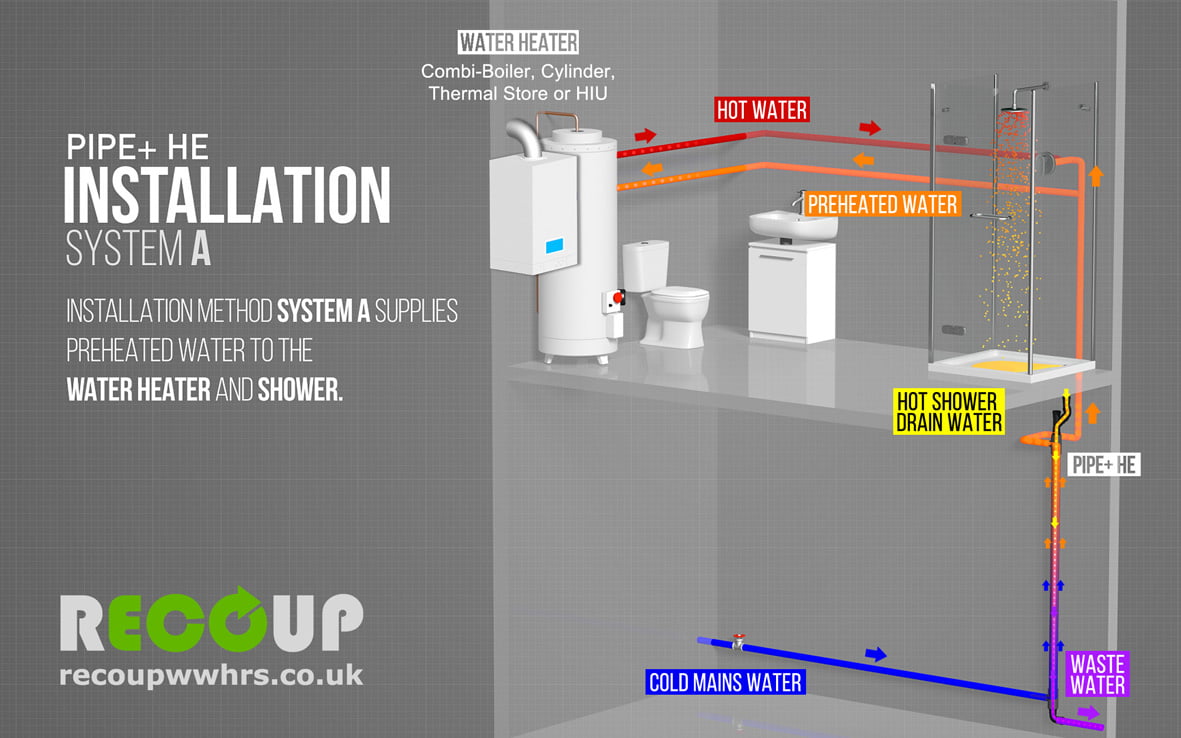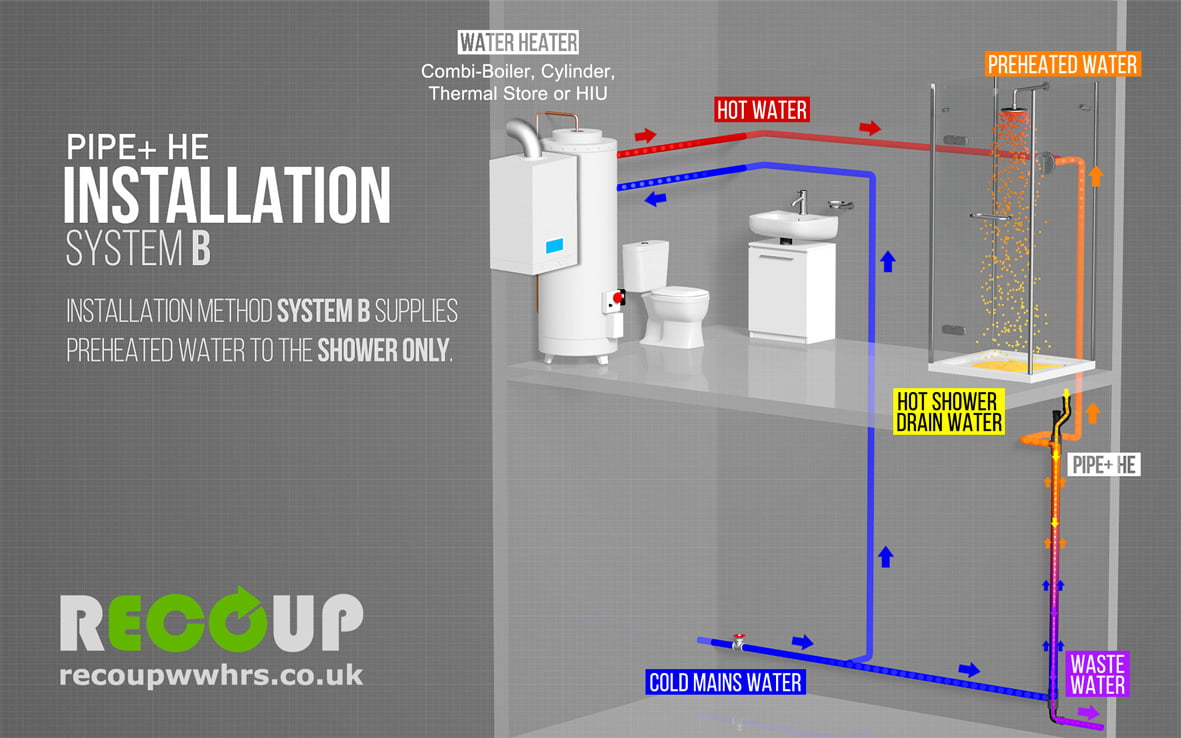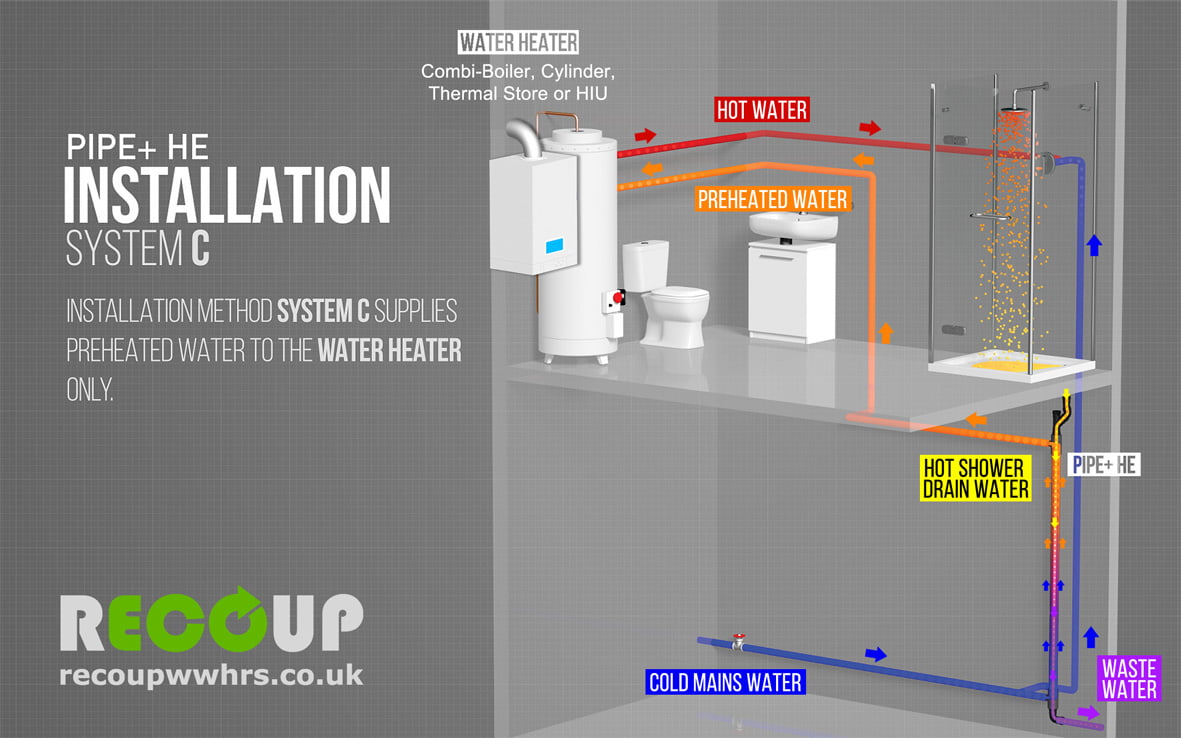Waste Water Heat Recovery for Showers
Scaling Retrofit for Net Zero: The Role of WWHRS at NeRV
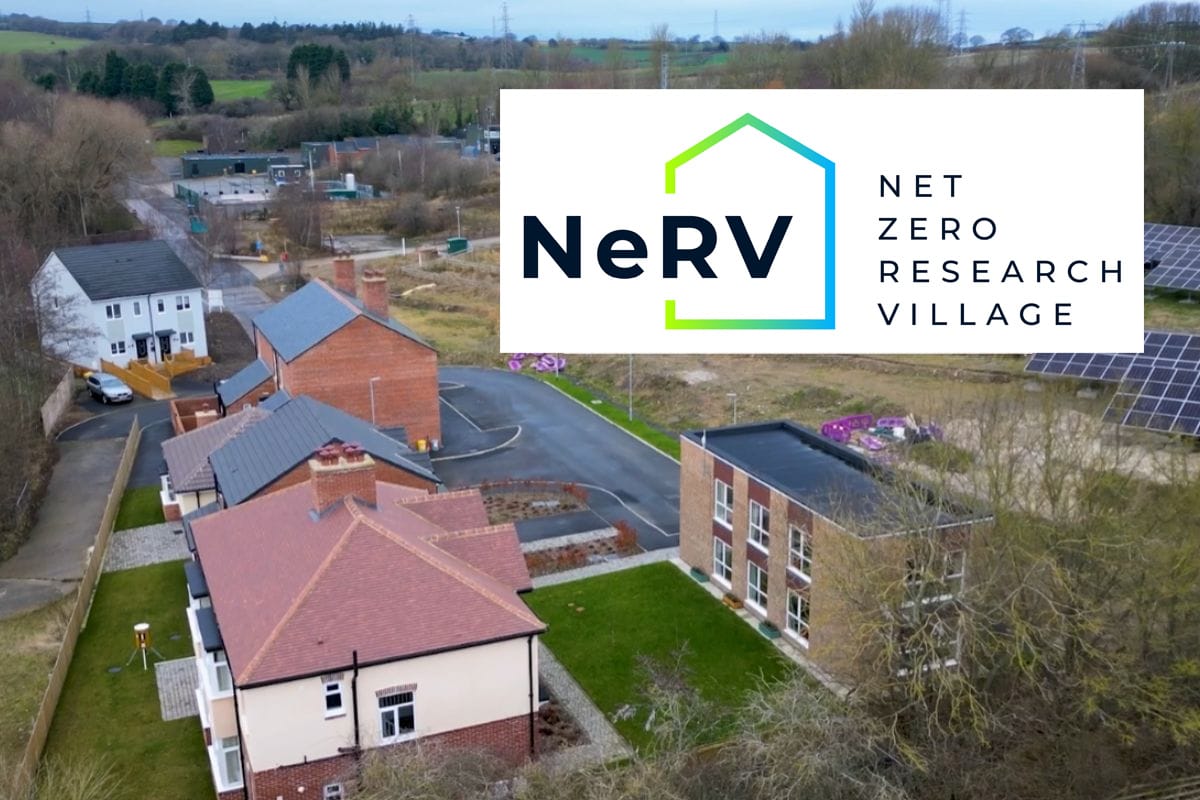
Decarbonising UK Homes: A National Challenge
Decarbonising the UK’s existing housing stock is one of the country’s biggest challenges in meeting its 2050 net-zero targets. Recoup Energy Solutions and the Net Zero Research Village (NeRV) are tackling this challenge by testing scalable, practical retrofit technologies that can be deployed across a wide range of homes.
With around 25 million UK homes in need of energy upgrades, we need effective solutions, fast. Many older properties can’t easily support major fabric improvements or complete heating system replacements. That’s where smart, lower-disruption technologies like waste water heat recovery for showers (WWHRS) come in.
About NeRV: A New Model for Retrofit Research
NeRV, the UK’s first research and demonstration facility for domestic decarbonisation, is part of Northern Gas Networks (NGN). Based in Low Thornley, the test site, called ‘Futures Close’, features nine homes built to original standards. These include three 1910 terraced houses, two 1930s semis, a 1950s bungalow, two 1970s flats, and a 1990s detached house. This diverse housing stock allows researchers to trial and evaluate different technologies under real-world conditions.
NGN is working with the Energy Innovation Centre, National Energy Action, and Newcastle University to test retrofit solutions and understand how residents perceive and adopt them. NeRV’s mission is to provide real-time, scalable data to challenge myths around home retrofit and inform national strategy.
“A unique feature of the Research Village is its ability to scale from individual houses to entire regions,” says Richard Hynes-Cooper, Head of Innovation at NeRV. “It allows us to explore how energy, transport, and water systems interact and develop strategies that improve sustainability across the board.”
To support this work, NGN invited green technology companies with proven, high-performing solutions. Recoup Energy Solutions was selected to participate.
“We’ve been working with NeRV since late 2023,” says Ellis Maginn, Recoup’s Head of Technical & Specification. “Supporting such forward-thinking research projects is a big part of our strategy as a business and renewables provider. Our products already feature in several NetZero new build trial sites across the UK, but that is only part of the energy and carbon reduction challenge.”
Ellis continues: “Making our existing housing stock more efficient is huge challenge. Futures Close shows a representative selection of the house types that exist across the UK. Installation and independent testing of our WWHRS retrofit products on projects like this not only validates their efficiency and decarbonisation capabilities, but highlights the relative simplicity of incorporating waste water heat recovery for showers into existing properties.”
WWHRS Retrofit Installations at NeRV
Recoup assessed each property to identify where WWHRS could be added with minimal cost and disruption. Four homes were selected. Every property could have been provided with WWHRS but comparisons without were also required as part of the project. The Recoup team retrofitted both Pipe HEX Active and Easyfit+ systems, and installed inline temperature and flow sensors on domestic hot water and waste pipes. These were integrated into the site’s data system for monitoring and testing.
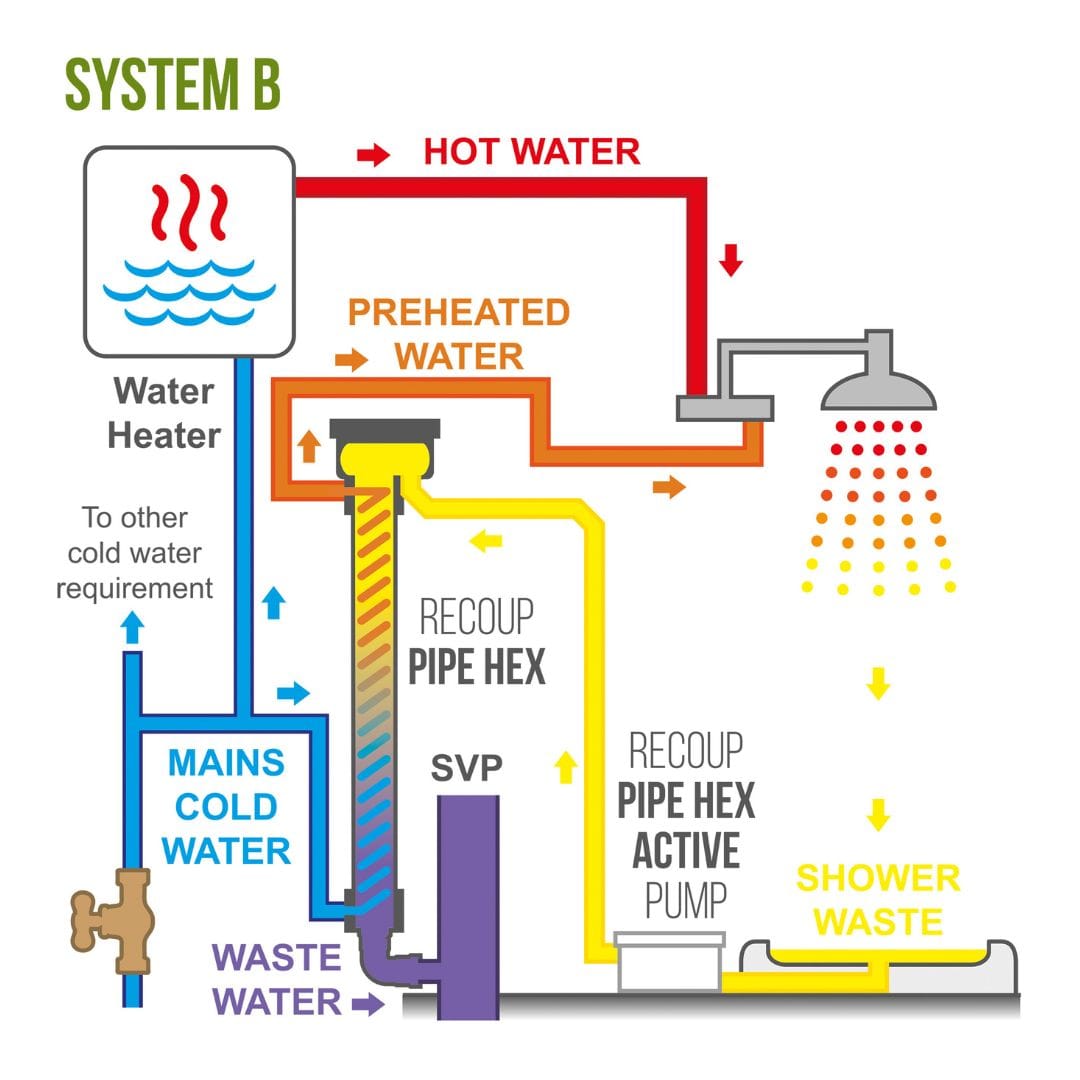
The Pipe HEX Active
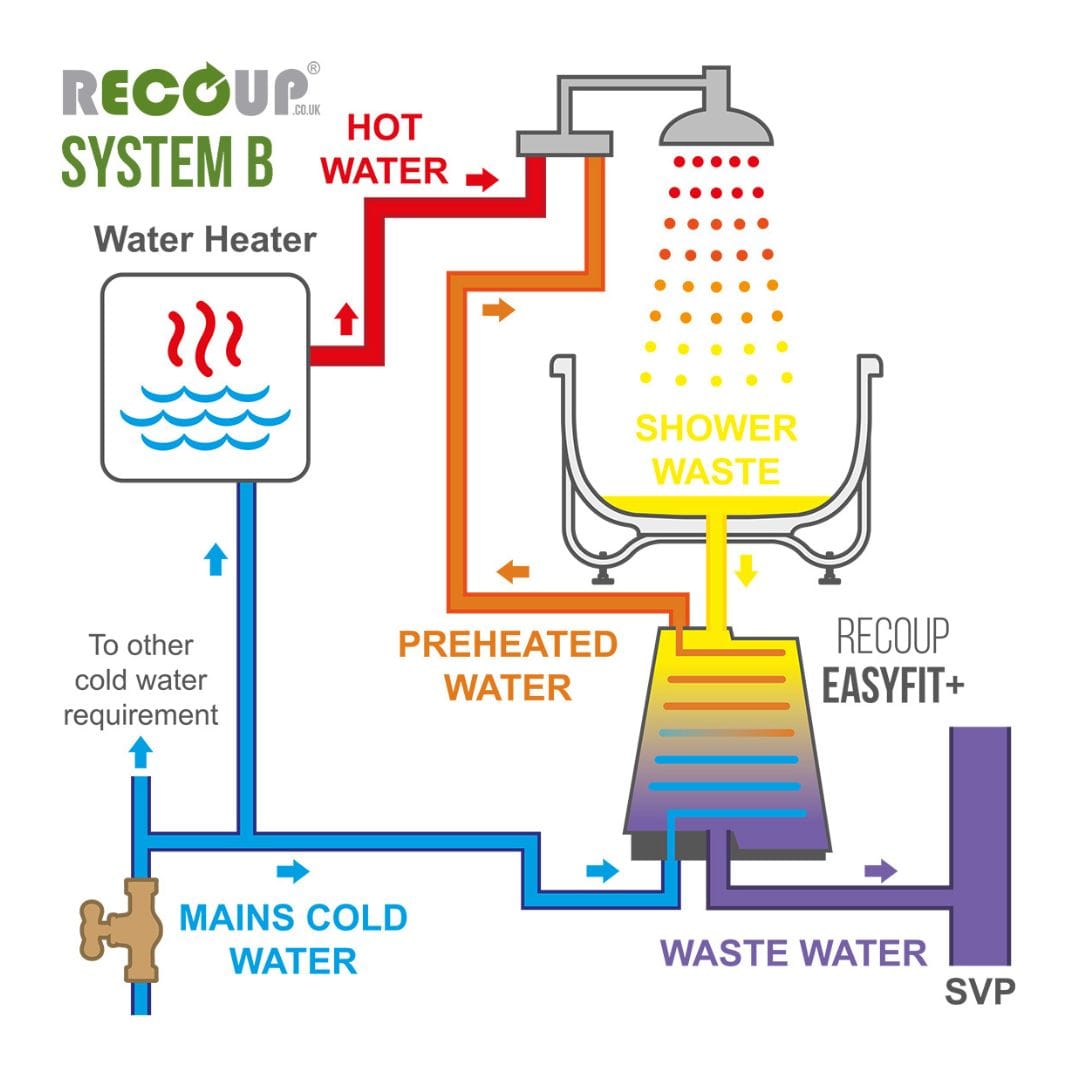
The Easyfit+
Installing Pipe HEX Active
The Pipe HEX Active, a pumped version of the Pipe HEX allowing for the highest efficiency system to be installed on the same floor as the shower, was fitted into the 1990s detached house. A cupboard behind the ensuite provided enough ceiling height, so no alterations to the ceiling space were needed. Shower waste was routed through the wall to the pump and back from the bottom of the Pipe HEX to the SVP. Some extra pipe supports and the ability to completely isolate the system were added because the home is part of a demonstration site; these wouldn’t normally be needed in a regular installation.
The Pipe HEX Active installed in this way demonstrates how the highest efficiency Recoup product can be easily retrofitted with minimal disruption. Although there are lower efficiency Recoup product options available, which can be considered less complicated, the benefits of incorporating the pumped vertical system are the increase in savings that it will provide. Maximising the energy saving and carbon reductions that can be achieved.
Installing Easyfit+ in Older Homes
The Easyfit+ system, which fits horizontally under a bath with an over-bath shower, was installed in three homes: one 1910 terrace and the two 1930s semis. Homes from this era typically lacked space for separate showers, so over-bath units were common.
“All Easyfit+ units were installed beneath shorter-than-average 1.5 m baths,” says installer James Dickerson. “Minor external pipework adjustments were needed for drainage heights, but the installs were generally straightforward. The added test, isolation, and system switching equipment made things a bit more complex, but that’s only for this monitoring setup, not a normal requirement.”
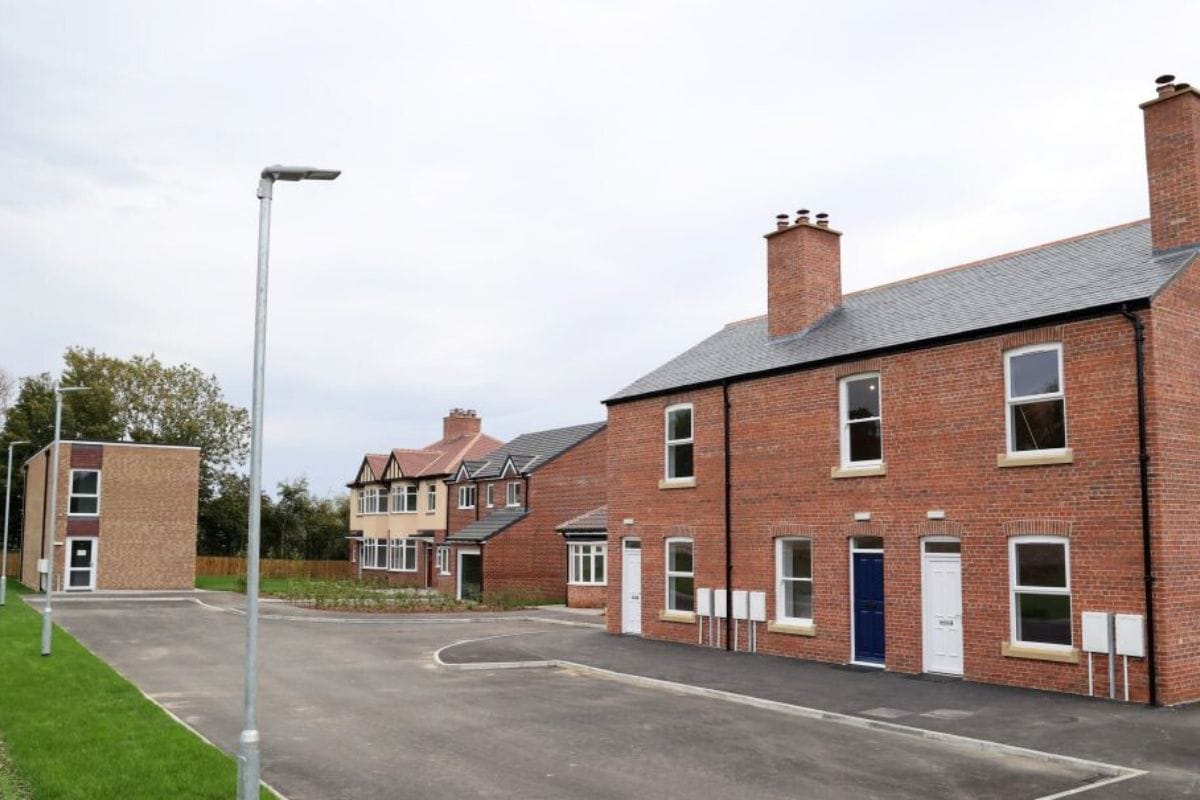
The NeRV test homes at Futures Close.
WWHRS system can be configured in one of three ways, installation methods referred to as System A, B, or C. Each produces different system efficiencies. The plumbing layout of the property and retrofit priorities usually determine which installation method is used. System B, the simplest, returns preheated water to the shower mixer only, avoiding the need to access the water heater. System A returns preheated water to the water heater and shower, System C to just the water heater. Meaning the ease of installing System A or C can be significantly impacted by the building layout.
In the 1930s semis, the team demonstrated both common retrofit scenarios. In the left-hand home, the water heater was next to the bathroom, allowing a full system A install with minimal pipework. This house now supports all three configuration types for testing. In the right-hand property, and in the 1910 terrace, where reaching the heater was harder, only system B was installed, showing the simplest, least disruptive approach.
These installations show how WWHRS can flexibly adapt to different home types and constraints, helping scale retrofit efforts across the UK.
Why WWHRS Is Ideal for Retrofit
Older homes are key to meeting net-zero targets, especially where full fabric upgrades or heating system changes are not feasible. WWHRS offers a low-disruption, cost-effective way to cut domestic hot water energy use – one of the biggest contributors to residential carbon emissions.
Unlike major retrofits like external wall insulation, WWHRS installs are localised and quick. The system works with boilers, heat pumps, or hybrid setups, making it ideal for mixed-tenure properties or phased upgrades. It also reduces peak DHW demand, easing pressure on heating systems and electricity grids, particularly important as more homes move to electric heating.
A Scalable Solution for a Net-Zero Future
The NeRV project shows how WWHRS can be successfully integrated into various UK housing types. With flexible installation options and measurable benefits, Recoup’s technologies offer a practical pathway to energy savings and emissions reductions.
As the UK looks to decarbonise millions of homes by 2050, proven, scalable solutions like WWHRS will be crucial. The findings from NeRV will help shape best practices, inform policy, and accelerate the adoption of retrofit measures that work for both residents and the planet.
More Case studies
Gilden Park Sports Pavilion, Harlow
Waste Water Heat Recovery for ShowersBuilding Greener Leisure Spaces with WWHRS Technology At the new Gilden Park Sports Pavilion in Harlow, Recoup’s Drain+ Duo HE Waste Water Heat Recovery Systems (WWHRS) are turning everyday showers into a source of energy...
The Micro House Scotland Project
Waste Water Heat Recovery for ShowersMicro House Scotland is a pioneering self-build project by scientist and engineer Neil, who set out to prove that small-scale building doesn’t have to mean compromising on comfort or performance. His vision was to create a highly...
The Lovell Tomorrow Home featuring Recoup Pipe HEX
Waste Water Heat Recovery for ShowersRecoup’s shower waste water heat recovery system (WWHRS), the Recoup Pipe HEX, has been included in another leading housebuilder trial. This time for Lovell as part of its eco-friendly comparison trial at Cornish Park in...


